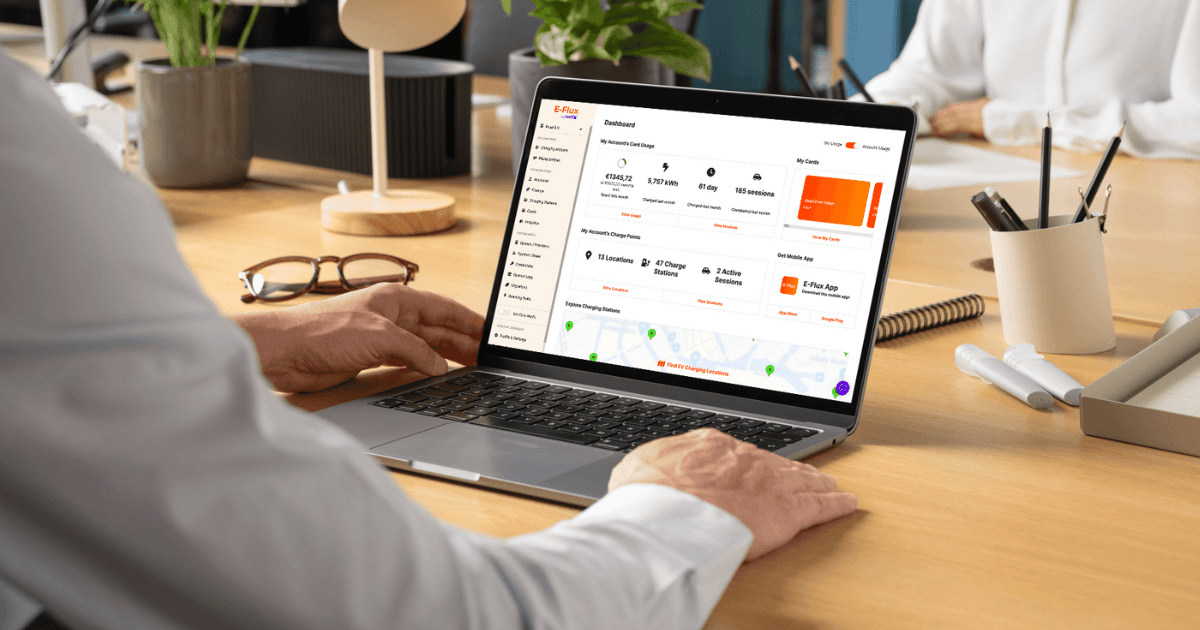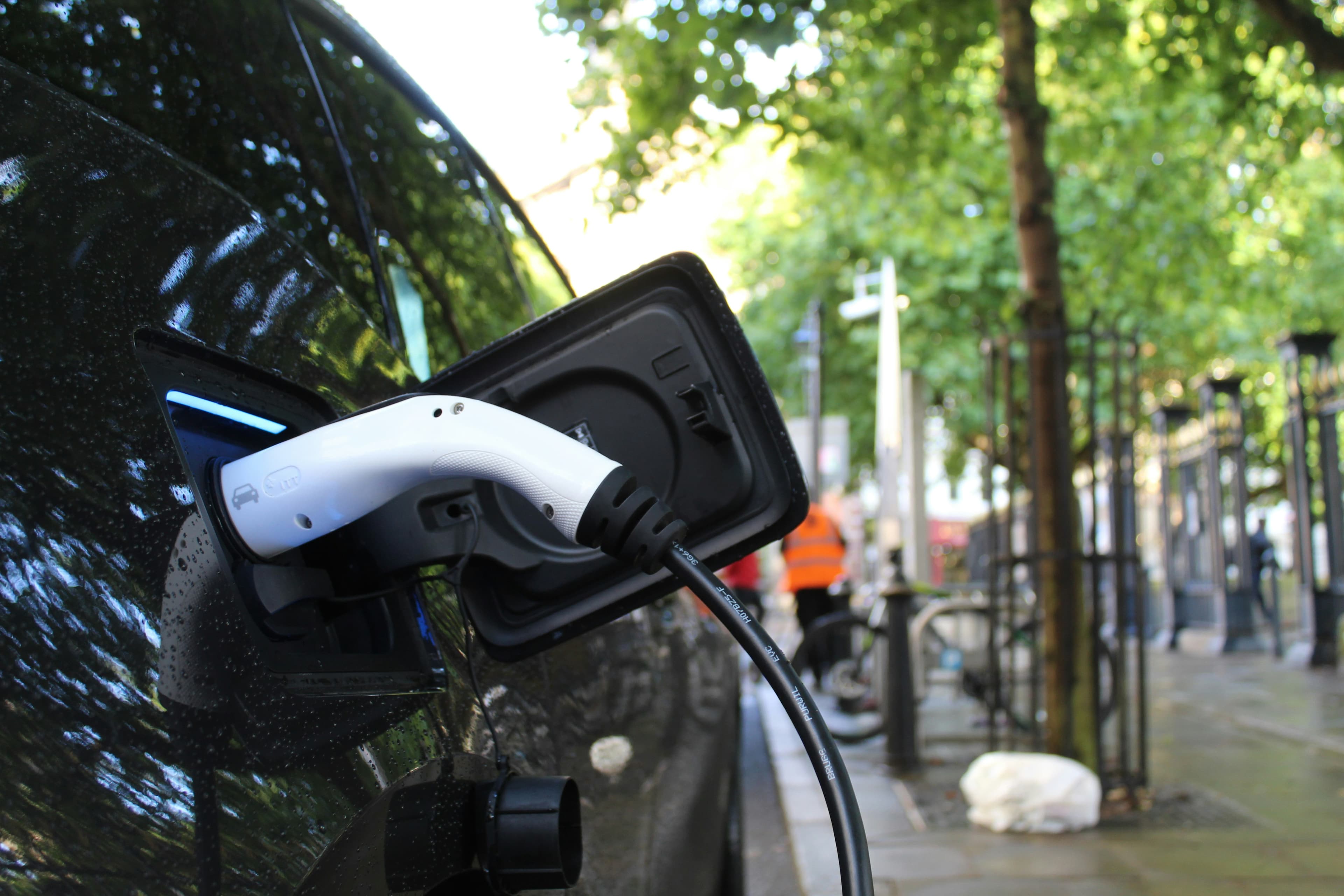At a glance
Smart charging methods include load balancing techniques such as static and dynamic load balancing, and vehicle grid integration (VGI) strategies like grid-aware smart charging and vehicle-to-home (V2H) setups. E-Flux by Road supports these methods, promoting safety, efficiency, and grid optimisation.
Energy management, also known as smart charging, is an umbrella term for various technologies, methods and solutions for managing electricity in an intelligent way.
There are different levels of sophistication of energy management solutions, and these will depend on the customer’s needs and infrastructure.
Smart charging methods
Load balancing
Load balancing, also called local load management, regulates how much power can be consumed by an EV charger. A local electrical circuit has a limited amount of capacity and if an EV draws more power than the circuit can handle, a breaker can hit, and could cut the power.
The simplest way to achieve load balancing is by applying static load balancing, whereby a hard limit of the amount of current is configured on an EV charger. This can be done by setting a current limit on the charger. Many hardware models also support more advanced charging schedules where different current limits are configured over time.
Dynamic load balancing
The available capacity on a local electrical circuit depends on other devices that consume power. Dynamic load balancing automatically decreases or increases an EV charger’s draw based on the remaining capacity on the local electrical circuit. The current limit is thus adjusted dynamically based on capacity and load observations elsewhere in the local electrical circuit.
This can be accomplished by installing a smart energy meter, which measures the demand of your appliances in your home and adjusts an EV’s available capacity. However, more advanced setups are possible where many EV charge stations use the same local electricity circuit, and power needs to be divided and scheduled among all users.
The benefits for dynamic load balancing are multifold:
Prevents overloading of the local electricity circuit, resulting in higher safety and less maintenance
More efficiency of power consumption for EV chargers, resulting in faster charges
Prevents the need for upgrades to larger capacity electrical wiring

Vehicle Grid Integration (VGI)
The trend of electrification often outpaces electricity grid capacity. This means there is a growing need to control when energy is consumed or produced to the grid. Large fluctuations in energy demand also create economic incentives to control costs.
One way to optimize an EV charger’s grid consumption is to only allow charging at a later time at night after the peak grid demand. Charging an EV only after midnight has shown a significant reduction in evening peak demand and a lower electricity bill.
Grid-aware smart charging (V1G)
The next step is to dynamically set an EV charger’s consumption behavior based on current grid conditions. These conditions include current electricity price, predicted electricity price, historical consumption patterns and grid operator controls.
There are various types of solutions for this type of smart charging. Some of them can run independent of the CPO backend, while some of them are integrated with the CPO backend.
Vehicle-to-home (V2H)
V2H is also known as vehicle-to-building (V2B) and vehicle-to-everything (V2X). In a vehicle-to-home setup, the power stored in an EV can be pushed into the local electricity circuit. This allows for other devices to consume energy from the EV battery. This is also known as bidirectional charging.
The use case of vehicle-to-home is not very strong in everyday situations owing to a combination of factors:
Commuters need a charged car in the morning
Off-grid solar energy is not produced at night
Peak domestic appliance power consumption is in the evening and in the morning
Vehicle-to-grid (V2G)
V2G combines everything together:
- Grid conditions and controls
- Ability for power to be consumed by the grid
- Local power consumption conditions
- Plugin-charge capabilities that allow authentication with your EV
- Advanced trading of electricity between EV user, home and grid
There are also various mechanisms, for example OpenADR, for power companies to communicate load demands as part of the development of smart grids.
In order to make V2G work there are a lot of parties that need to integrate. For this, the standard ISO 15118 has been developed. This defines the orchestration between EV, charge station, utility provider, charge station operator and other specialist parties.
The ISO 15118 standard was first released in 2014, but has seen very little real-world commercial adoption. This is due to the many parties involved, and the complexity involved in implementing the ecosystem.
E-Flux by Road and smart charging
Our platform supports static load balancing and we work with manufacturers and installation partners to offer dynamic load balancing solutions for AC/DC chargers. These solutions ensure a higher degree of safety and less maintenance for the local electricity circuit as well as faster, more efficient charging sessions.
We’re also developing further vehicle-to-grid capabilities with select automotive partners. We currently integrate with leading energy management platforms like Coneva, MAXEM, Jedlix and Stekker.

